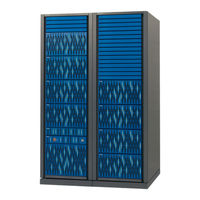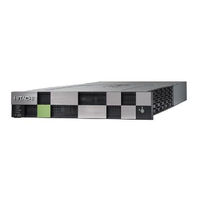Hitachi VSP F800 Manuals
Manuals and User Guides for Hitachi VSP F800. We have 4 Hitachi VSP F800 manuals available for free PDF download: User And Reference Manual, System Administration Manual, System Administrator Manual, User Manual
Hitachi VSP F800 User And Reference Manual (531 pages)
Command Control Interface guide
Table of Contents
-
Getting Help17
-
Overview19
-
Horcm_Mon45
-
Horcm_Dev51
-
Horcm_Inst53
-
Horcm_Ldev54
-
Horcm_Ldevg55
-
Horcm_Instp56
-
Shadowimage59
-
Context Check104
-
How to Check105
-
Horcm_Cmd146
-
Starting up CCI147
-
Operation Method168
-
Script Examples177
-
Script Examples179
-
Script Examples182
-
Volume186
-
Script Examples188
-
Script Examples194
-
Script Examples204
-
Settings254
-
Systems299
-
Horcmperm301
-
Troubleshooting325
-
SSB Codes346
Advertisement
Hitachi VSP F800 System Administration Manual (414 pages)
Virtual Storage Platform Gx00 and Fx00
Table of Contents
-
Preface11
-
-
-
-
Managing Volumes101
-
-
-
-
Session Timeout159
-
Roles160
-
-
-
-
Overview258
-
-
-
-
Hosts Report285
-
Luns Report288
-
Ports Report293
-
CSV Files315
-
Cacheinfo.csv316
-
Chastatus.csv317
-
Dkainfo.csv318
-
Dkutempinfo.csv320
-
Eluninfo.csv324
-
Envmoninfo.csv326
-
Fcspnameinfo.csv327
-
Hduinfo.csv328
-
Ldevcapainfo.csv332
-
Ldevstatus.csv335
-
Luninfo.csv336
-
Lunportinfo.csv337
-
Microversion.csv338
-
Modeperlpr.csv340
-
Mppcbstatus.csv341
-
Pdevcapainfo.csv342
-
Pdevstatus.csv344
-
Ppinfo.csv346
-
Ssddriveinfo.csv347
-
Sysoptinfo.csv348
-
-
-
Glossary387
-
Command Device389
-
External Volume392
-
Journal Volume394
-
Local Copy395
-
Raid Group399
-
Raid Level399
-
Severity Level401
-
Shared Memory401
-
Storage Cluster402
-
-
Index407
Hitachi VSP F800 User Manual (326 pages)
Thin Image Virtual Storage Platform
Table of Contents
-
Preface9
-
Getting Help14
-
Comments14
-
-
-
-
-
-
Managing Pools170
-
-
Deleting Pools187
-
-
-
-
-
History Window247
-
TI Pairs Window285
-
Glossary299
-
Command Device301
-
Data Consistency302
-
External Volume304
-
Host Failover305
-
Initial Copy305
-
Journal Volume306
-
Local Copy307
-
Pair Status310
-
Quorum Disk312
-
Raid Group312
-
Raid Level312
-
Remote Site313
-
Severity Level315
-
Index321
Advertisement
Hitachi VSP F800 System Administrator Manual (368 pages)
Table of Contents
-
Preface
13 -
-
-
-
-
-
User Tasks77
-
Roles85
-
-
-
-
-
-
Hosts Report210
-
Luns Report213
-
MP Units Report214
-
Ports Report219
-
CSV Files242
-
Cacheinfo.csv243
-
Chapuserinfo.csv244
-
Dkastatus.csv246
-
Dkutempinfo.csv248
-
Eluninfo.csv252
-
Envmoninfo.csv255
-
Fcspnameinfo.csv256
-
Fcspportinfo.csv257
-
Hduinfo.csv258
-
Jnlinfo.csv262
-
Ldevinfo.csv264
-
Ldevstatus.csv267
-
Lpartition.csv268
-
Lunportinfo.csv270
-
Microversion.csv272
-
Modeperlpr.csv274
-
Mppcbstatus.csv275
-
Pcbrevinfo.csv276
-
Pdevcapainfo.csv277
-
Pdevstatus.csv279
-
Pkinfo.csv280
-
Ppinfo.csv282
-
Ssddriveinfo.csv283
-
Ssidinfo.csv284
-
Wwninfo.csv285
-
Advertisement



